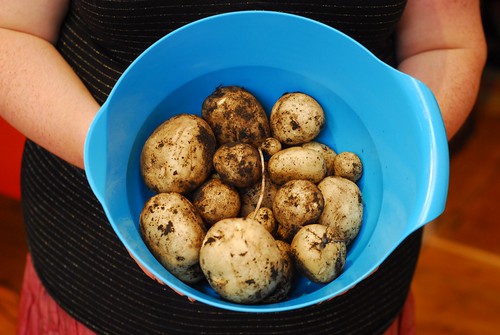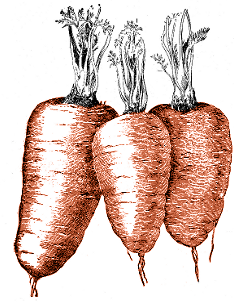Archive for October, 2011
Posted in Practicalities, The Old Garden In Bristol on Sunday, October 30th 2011 (8.50 PM).
As I think I mentioned a while ago, shortly after we moved into Symbolic Towers we noticed a vinelike plant spreading itself rapidly over the garden trellis. None there at all when we moved in, but within a couple of months the trellis was covered. Bindweed. It seems to be endemic in this part of Bristol: you can’t go anywhere this time of year without seeing its foliage and its white trumpets clogging up fences and doing their best to strangle other plants, particularly in semi-wild areas like the edges of railway lines. We’ve spent a lot of time tracing every stalk, and digging up every little bit of bindweek rhizome we could find; carefully, like archaeologists, to make sure we didn’t break the rhizomes up or leave fragments behind. It has mostly worked: a few stems have come back, but only a few, none of them very strong. On those, we tried a method we heard on Gardeners’ Question Time: singing and blackening the leaves. It worked, too, sort of, although (of course) not as effectively as physical removal.
I was aware, of course, that things could have been far, far worse. Moreover, I was reminded by a news story K came across, about Japanese knotweed. It reminded me of the advice I read in (I think) an Alys Fowler book: if you have knotweed, move house. There are knotweed-infested places in Bristol – Arno’s Vale cemetery, for one, and some parts of the riverbank in St Philips – and, if we visit any, we are always extremely careful not to go near the stuff. Over-careful, maybe, but it’s not something we could exactly risk.
bindweed, bristol, japanese knotweed, perennial weed, weed, weeding
Posted in Retrospective, The Old Garden In Bristol on Sunday, October 16th 2011 (9.05 AM).
This post is, unfortunately, going to be rather low on photos compared to those previous, because plants that aren’t growing well, are dying off or somehow going wrong, aren’t really inviting subjects for the camera. I’ve resisted the temptation, though, to title it “Failures”, because all of these plants gave something to the garden, even if it was just a clump of foliage or something for the local caterpillars to eat.
Pattypan squash: this is an example of why you should be careful what plants you let into your garden. We decided we wanted a pattypan squash plant: they can look rather attractive, and we always use plenty of squash in cooking. By the time we decided we wanted one, though, it was definitely a bit late in the season to be growing one from seed. We went down to one of the local garden centres; all the pattypans they had looked to have signs of mildew on their leaves. We bought the best we could find, but the signs of mildew did indeed turn into worse mildew. It fruited, but its fruits were hardly an inch across. Of course, I’ve heard since, this year has been a bad year for squashes, but I’m sure that a healthier plant would have had a better chance of success.
Dill: We love dill, particularly with salmon in the Scandinavian style, so dill had to be a must for the garden. We planted plenty of dill seeds, and they sprung right up, right away. But then they didn’t stop springing. Every dill plant we grew turned into a tall, spindly thing, four or five feet high but with barely any usable foliage. Pinching out the tips didn’t seem to help.
Spring onions: these we grew from seed, and they started out well. They seemed to be taking a while, but we weren’t too worried, having picked a variety with a low chance of bolting. Then, though, a period of hot weather followed by heavy rain ruined the majority of the plants, snapping the stems. A handful have grown back from that, but neither those nor the ones which avoided the rain in the first place have really reached a harvestable thickness.
Sweet peas: the idea with these was: companion plants around our green beans. The problem with them was: they grew too well. They grew around the beans, over them, taller than them, almost swallowing them up. And then didn’t even flower. The problem, maybe, is that sweet peas aren’t bred to grow in vegetable-quality compost, which is possibly an issue with any companion planting scheme that involves decorative and produce plants mixed in together.
Japanese saltwort: we spotted this in one of the local garden centres, the excellent Riverside co-operative. We bought it because it was intriguing, and unusual. It grew, grew well. The problem, though was that we didn’t really know what to do with it; and its heart quickly became dead and woody, the living parts straggling over the edge of its pot. I have the feeling it is one of those plants which, if not kept in a container, could easily take over an entire garden.
What to learn from all this? Well, next year, we’ll definitely be keeping our spring onions rather more sheltered. We’re on the hunt, too, for a different variety of dill to try. The most important thing to remember, though: however much we want a particular variety of plant in the garden, only let it come in if it’s healthy.
dill, japanese saltwort, pattypan squash, saltwort, scallion, spring onion, squash, sweet pea
Posted in Retrospective, The Old Garden In Bristol on Saturday, October 1st 2011 (11.10 AM).
The list, in the previous post, of plants we’ve grown this year wasn’t really in any particular order; just off the top of my head as I cast my mind around the garden. Here, though, are some of the plants that we can say were a success.
Potatoes: probably our biggest success, grown in a dustbin with holes drilled in the bottom. We grew them in a mixture of soil and compost, at first, earthing up regularly with compost until it reached the top of the bin. I was expecting flowers and fruit, which we didn’t get; and we were rather worried about a leafhopper infestation which developed, damaging the leaves quite a bit. When the foliage died back, though, we upended the bin and found a healthy crop, about 600g per seed. Next year, we hope to have room for a couple more bins.

Peas: we bought small plants from the garden centre, planted them up in wine boxes, and put them on top of the garden wall, trained up the latticework. Again, each plant gave us a plentiful harvest; but we did have a bit of a mildew problem, probably caused by planting too many in each box.
French marigolds: we didn’t manage to eat any, but the plants themselves have gone happily on producing flowers all summer. They’re still in flower now, with more buds on the way.
Swiss chard: we planted this in a variety of containers, and tried harvesting and eating it at a variety of stages, from baby leaves to fully-grown leaves and stems. All of them worked pretty well: the baby leaves were ready fairly fast, and harvesting most of those left room for a few plants to grow into adulthood. Moreover, what we weren’t expecting was that we would be able to treat the adult plants in a cut-and-come-again fashion; we thought we’d harvested everything we could a few weeks back, but we now have healthy and harvestable leaves waiting for us again.

Mint: it grew, despite the best attempts of leaf-miners and caterpillars to eat it. Moreover, we kept forgetting we had mint leaves to use, leaving the mint bush to get rather overgrown and straggly; giving it a fierce trim rather more often would have left us with a healthier plant.
Feverfew: it grew very well, with attractive clusters of daisy-like flowers that have lasted well all summer. Now, we just have to work out what else it might be useful for.

calendula, feverfew, french marigold, marigold, mint, pea, pentland early, potato, review, swiss chard




